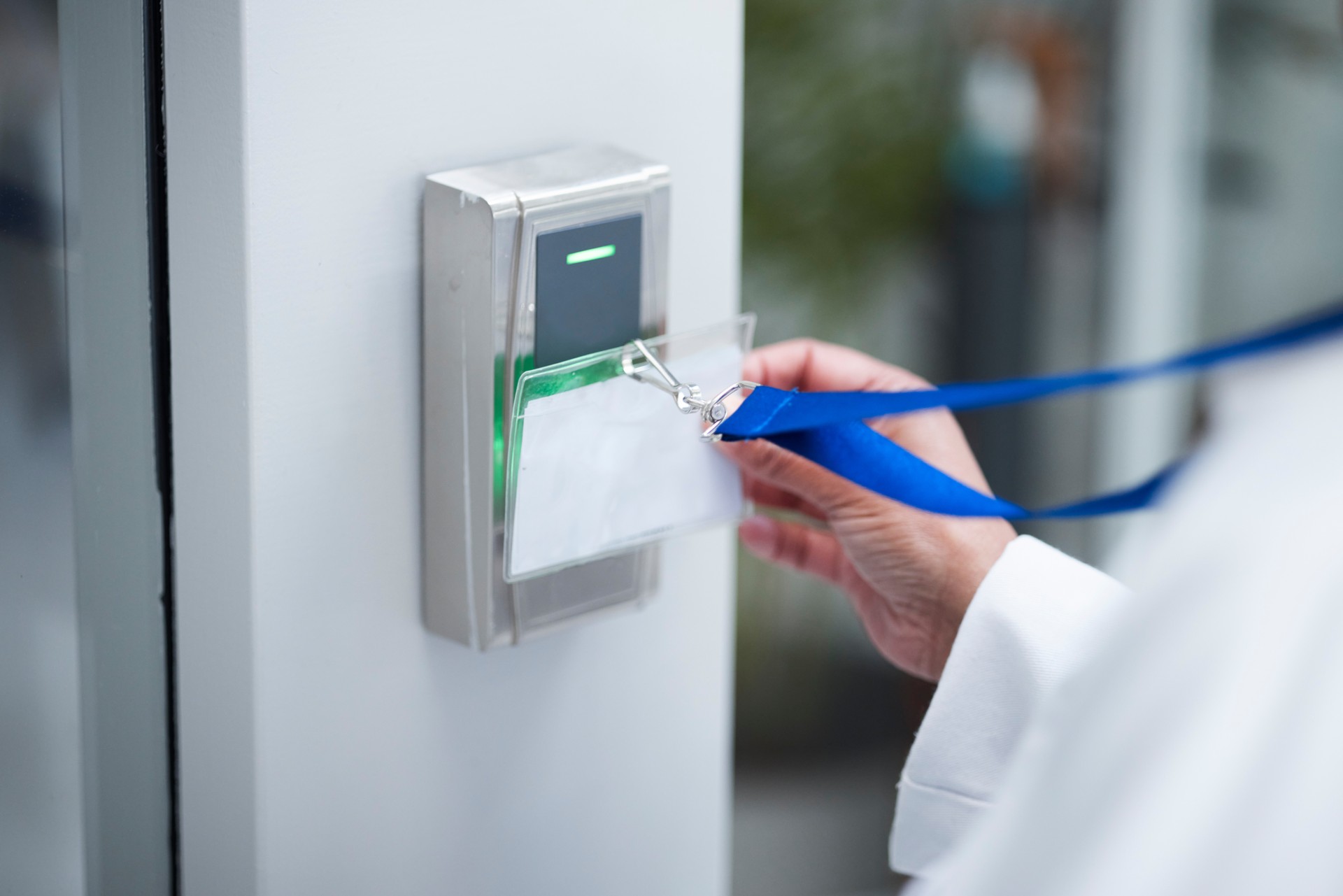A Physical Access Control System (PACS) is a security solution designed to regulate and manage the entry of individuals into specific physical locations, such as buildings, rooms, or restricted areas. PACS ensures that only authorized personnel can access certain areas of a facility, preventing unauthorized individuals from entering sensitive or high-security zones. As a fundamental component of physical security, PACS plays a crucial role in protecting people, assets, and information.
This article will explore what a Physical Access Control System is, how it works, its key components, and why it is vital for the security of modern organizations.
How Does a Physical Access Control System Work?
A PACS functions by authenticating individuals before granting or denying access to specific areas. It uses a combination of hardware and software to verify the identity of individuals and manage access permissions. When a person attempts to enter a secured area, the system checks their credentials against predefined access rules and determines whether to allow or block entry.
The basic operation of a PACS involves the following steps:
- Credential Presentation: The user presents a credential, such as a keycard, fob, biometric data (e.g., fingerprint or face), or a PIN, at an access point (door, gate, or turnstile).
- Authentication: The system validates the credential against its database to confirm the user’s identity.
- Access Decision: Based on the user’s identity and the access rules configured within the system, PACS either grants or denies entry.
- Access Event Logging: Every access attempt is recorded, whether successful or denied, to provide an audit trail for security and compliance purposes.
Key Components of a Physical Access Control System
A Physical Access Control System consists of several components that work together to control access to secured areas. The major components include:
1. Access Points (Doors, Gates, Turnstiles)
Access points are physical barriers, such as doors, gates, or turnstiles, that can be controlled electronically. These are the locations where users present their credentials for authentication.
- Doors: Commonly used in offices, rooms, or storage areas.
- Gates: Typically used at building entrances or in parking areas.
- Turnstiles: Often used in high-traffic areas to regulate entry one person at a time, such as in airports or stadiums.
2. Credential Readers
Credential readers are devices that capture and verify the credentials presented by users. The type of reader depends on the type of credential used. Examples include:
- Card Readers: Used with proximity cards, magnetic stripe cards, or smart cards.
- Biometric Scanners: Capture and verify fingerprints, facial features, or iris patterns.
- Keypads: Require users to input a PIN or password.
- Mobile Readers: Allow users to present credentials via their smartphones using technologies like Bluetooth or NFC.
3. Credentials
Credentials are the identifiers that users present to prove their identity and gain access. Common types of credentials include:
- Keycards and Fobs: Physical devices that store user information and are presented at a reader to gain entry.
- Biometric Data: Unique physical characteristics such as fingerprints, facial recognition, or retina scans.
- Mobile Credentials: Digital credentials stored on a smartphone, typically accessed through an app or via Bluetooth.
- PINs or Passwords: Numeric or alphanumeric codes that users enter at keypads.
4. Access Control Panel (Controller)
The access control panel is the brain of the PACS. It processes credential information received from readers and makes access decisions based on predefined rules and permissions. The controller is connected to the locking mechanisms of access points, and it determines whether to unlock or keep the entry point secure.
5. Locking Mechanisms
Locking mechanisms, such as electric door strikes or magnetic locks, secure doors and gates. These mechanisms are activated by the access control panel when a valid credential is presented, unlocking the door or gate to grant entry.
6. Access Control Software
Access control software is used to configure and manage the system. Administrators can define user roles, assign access permissions, generate reports, and monitor access activity in real-time. Modern access control systems often use cloud-based software, which allows for remote management and scaling across multiple locations.
7. Surveillance Integration
Many PACS systems integrate with surveillance cameras to provide visual verification of access attempts. This adds an additional layer of security by capturing footage of who enters specific areas, which can be useful for audits and investigations.
Types of Physical Access Control Systems
PACS can vary in complexity depending on the security needs of an organization. There are three primary types of physical access control systems:
- Discretionary Access Control (DAC): In DAC systems, the owner of the physical resource (e.g., the building or facility manager) determines who can access specific areas. Permissions are granted at the discretion of the owner, who can modify access settings for users as needed. This type of system offers flexibility but may not be suitable for high-security environments.
- Mandatory Access Control (MAC): MAC systems are stricter and are often used in environments that require high levels of security, such as government or military facilities. Access permissions are controlled by a central authority, and users cannot modify their own access rights. MAC systems follow predefined security policies based on classifications and user roles.
- Role-Based Access Control (RBAC): RBAC assigns access permissions based on the user’s role within the organization. Employees are grouped into categories (such as managers, employees, or visitors), and access to specific areas is granted based on their job function. This type of system is scalable and is widely used in businesses to ensure that individuals only access areas necessary for their work.
The Importance of PACS for Businesses
A Physical Access Control System is crucial for protecting both physical assets and sensitive information in an organization. Here are several reasons why PACS is important for businesses:
- Enhanced Security: PACS ensures that only authorized personnel can access restricted areas, reducing the risk of theft, vandalism, or unauthorized tampering with equipment and data. By regulating who can enter certain areas, businesses can better protect their employees, customers, and assets from harm.
- Protection of Sensitive Information: Many businesses handle sensitive information, such as financial records, intellectual property, or customer data. Limiting access to areas where this data is stored ensures that only authorized employees can interact with it, preventing data breaches or information leaks.
- Compliance with Regulations: Certain industries are subject to regulatory requirements regarding physical security, such as healthcare (HIPAA), finance (PCI-DSS), and government (FISMA). A PACS helps businesses meet these requirements by demonstrating that they have secure access control measures in place to protect sensitive data and maintain compliance.
- Auditing and Monitoring: PACS provides detailed access logs that track who accessed specific areas and when. These records can be used for internal audits, investigations, and compliance reporting. Additionally, if a security incident occurs, access logs can help identify the source of the breach or unauthorized activity.
- Improved Employee Safety: In addition to protecting physical assets, PACS enhances employee safety by controlling who enters the premises. The system can prevent unauthorized or dangerous individuals from entering sensitive areas, reducing the risk of workplace violence or accidents.
- Scalability and Flexibility: Modern PACS systems are scalable and can grow alongside your business. Whether expanding to new offices or adding more employees, a PACS can be easily configured to accommodate changes. Cloud-based access control systems provide flexibility by allowing administrators to manage access permissions remotely.
A Physical Access Control System (PACS) is an essential component of any comprehensive security strategy. By controlling who has access to specific areas within a facility, PACS protects sensitive information, physical assets, and personnel from unauthorized access. The system’s ability to manage access permissions, monitor activity, and provide detailed logs makes it an invaluable tool for businesses of all sizes, especially those operating in highly regulated or security-sensitive industries.
As threats to physical and cyber security continue to evolve, implementing a robust PACS ensures that businesses can safeguard their operations, meet compliance standards, and protect both their physical and digital environments.



